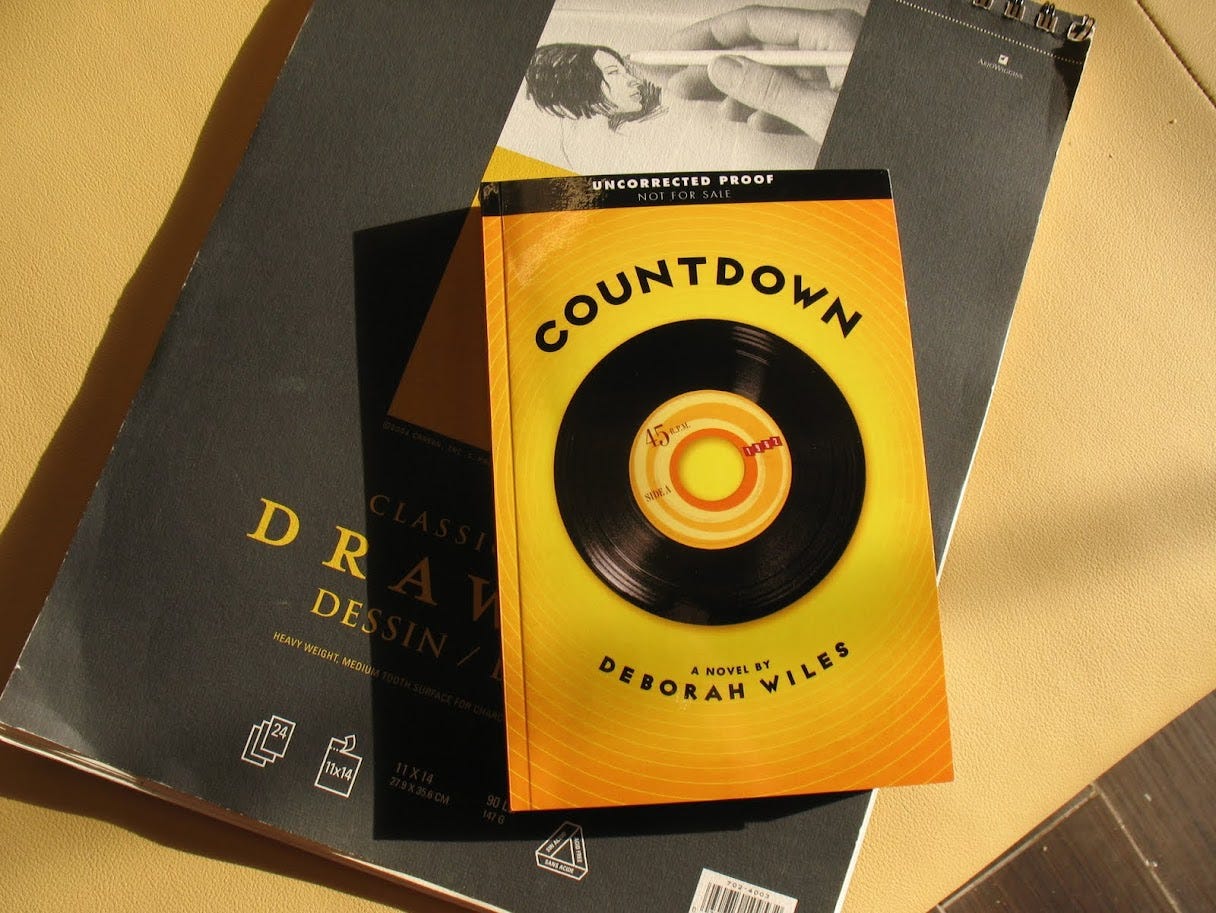Welcome to new Lab Coats in the Storybelly Writer’s Lab this week! Be sure to visit the Introductions in Chat and introduce yourself to the Lab Coat community (aka Sweethearts of the Storybelly Lab) and see who else is here. Subscribers get access to the Lab Chat where we share our writing and get lots of support and good cheer; Lab Coats can start threads and also have access to all previous and future Writer’s Lab lessons and assignments. Questions? Drop them in the comments here (or DM me) and they will be answered promptly by me or by our Lab Coat Ops Guru, Zach.
The first half of the Writers Lab weekly posts and exercises are open to everyone in the Storybelly community, right down to the assignments section, because I want everybody to have access to what goes into writing our stories and ways of capturing and telling those stories. Then, the assignments section builds on everything previous, goes into detail, and assigns… well… the assignment each week.
Free Advice (a la Ruby Lavender): IT IS FUN!
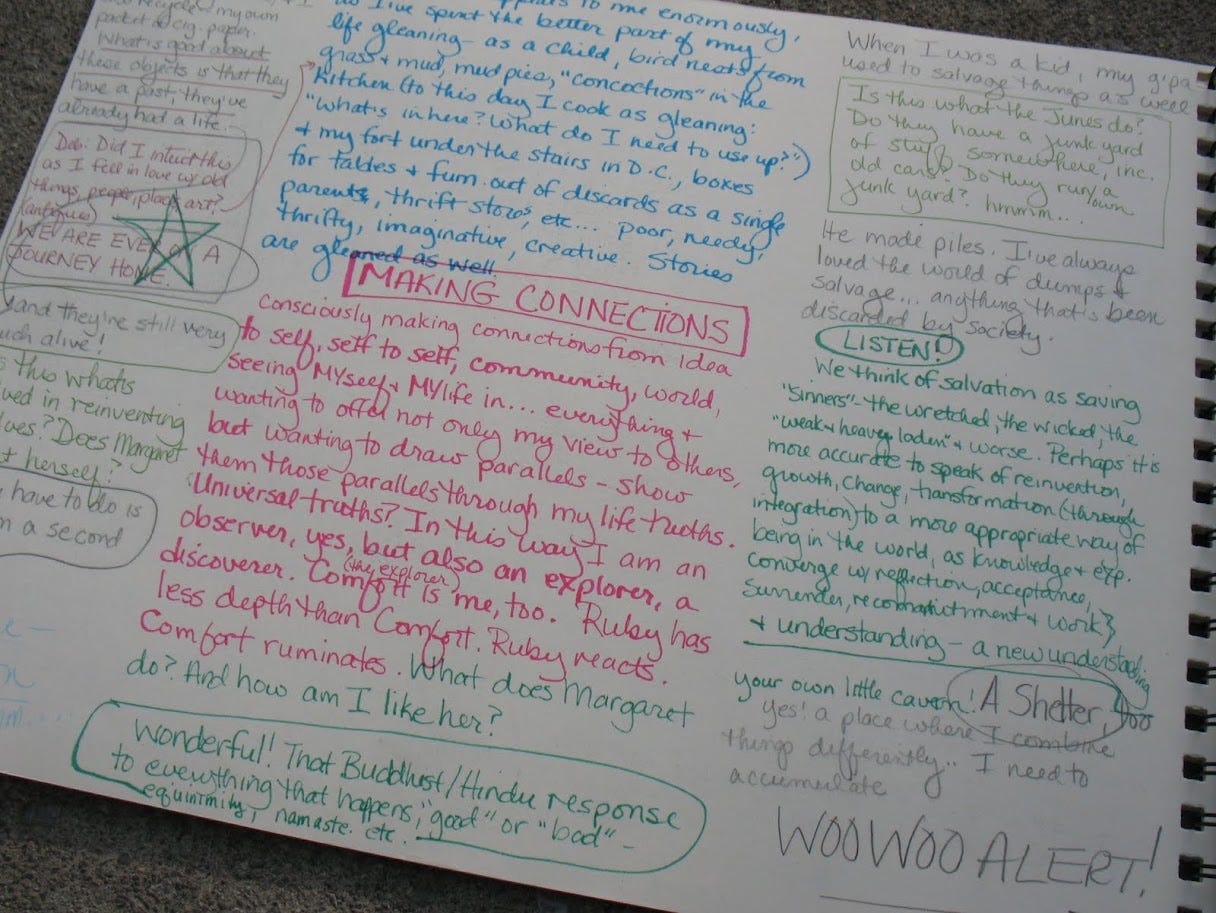
There is no requirement to be a professional writer, artist, or anything else, although, great if you are, we love you, too, and you have much to teach us/share with us (and I’ll bet you have good cheerleading skills :>). You need only be a real human, with a desire to create, to learn to write your story, or hone your craft, or work together in a chosen, warm-hearted, smart, creative, funny (we have SIFTERS!), helpful, practiced — and beginner — bunch of storytellers. It takes all of us. (We have a bunch of Ray Bradbury fans here, too!)
We’re here to experiment, to play, to work hard if that’s our jam for the week, to bring with us a work in progress or to begin something new — every week. For whatever purpose suits us. We are focused on personal narrative writing right now, with extra added “turning personal narrative into fiction” sprinkles. Let’s get to it. The Lab is the only paid portion of Storybelly, by design, to create a write-together community where we can delve into and get to know our own work well, and to champion one another’s work as well.
If you want to join in, here’s your link:
Onward! The first thing I thought, when I so blithely declared that April 9 would be the start of (the second half, actually) the spring quarter at the Lab was:
Lawd, this next Lab post will be long and full of links. Pace yourselves. :> And welcome to the second half of our spring quarter at the Storybelly Writers Lab!
As you know from Monday’s Digest and from last week’s Lab post, I worked in Virginia schools last week, encouraging students — and their teachers — to tell their stories, getting them started with same, and telling them that all story comes from what we know, what we feel, and what we can then imagine; that we pay attention, ask questions, and make connections when we’re writing; and that those three elements present themselves as 1) the moments of our lives; 2) the memories we have of those moments; and 3) the meaning we give them.

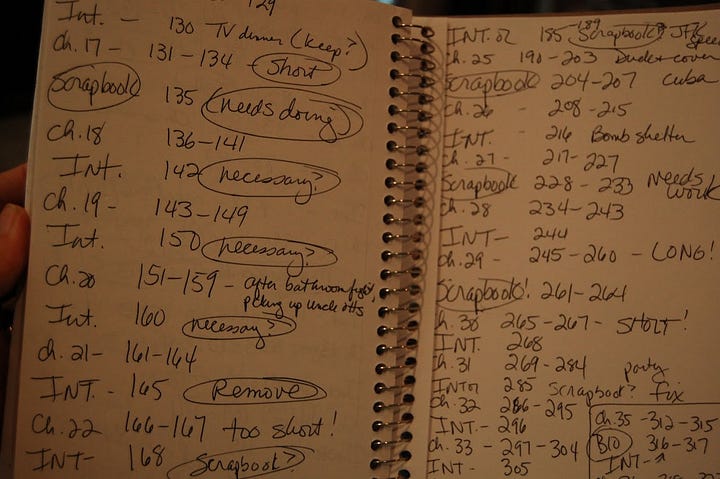
I have completely made up this “system” or “method” or what-have-you, over the years that I have worked with many, many thousands (literally) of students, teachers, undergraduates in college classes, families, and senior citizens and have tried to bring real-world writing tools to my students in workshop settings in ways that — put simply — help. Surprise. Produce results. Results that are sometimes breathtaking (you didn’t think you had it in you, did you?) This way of approaching story is an effective and meaningful way of thinking about and writing our stories. Here’s a helpful chart:
First read each column down, before moving on to the next column, then you can read across, i.e. “What you Know” corresponds to "Pay Attention” and “the Moments of your life.” Etc. Make sense? Spend some time here, thinking about these connections.
All Story Comes From:
What you Know // Pay Attention// Moments of our lives
What you Feel // Ask Questions // Memories we have of them
What you can Imagine // Make Connections// Meaning we give to them
I’ll ask our ops-guru to make us a box or a graphic for this. I’ve meant to do it, for ages… I’ve written it many hundreds of times on chart paper in workshops, and now we’ll have it enshrined, here at the ‘belly.//
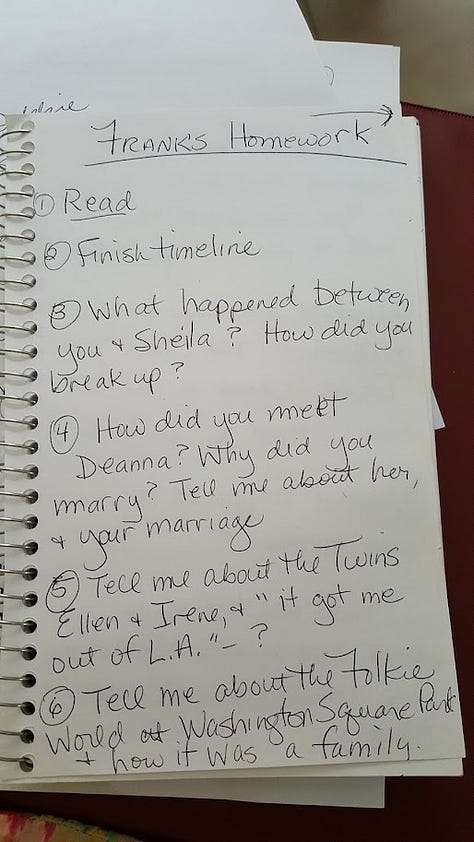
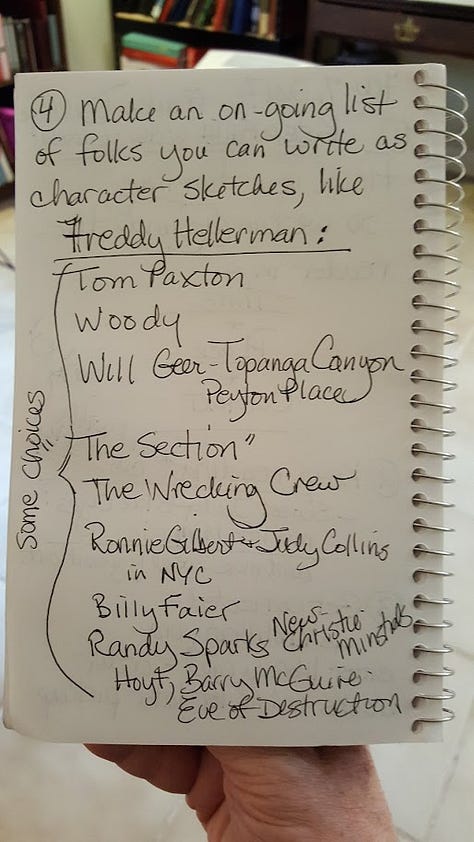
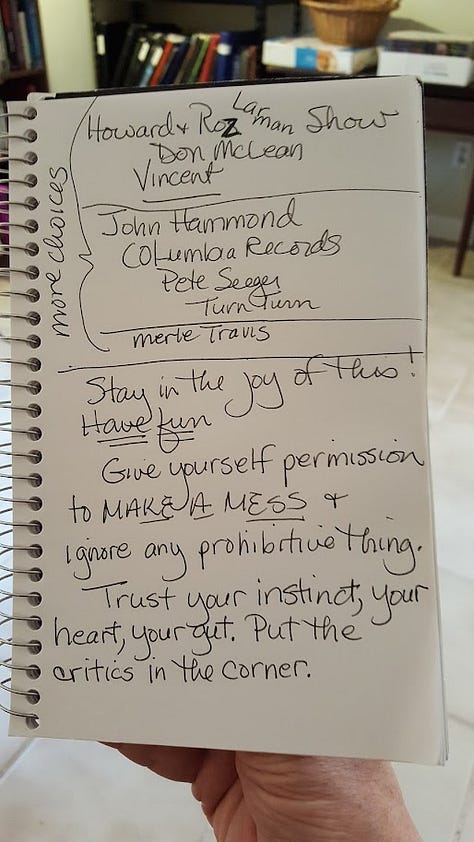
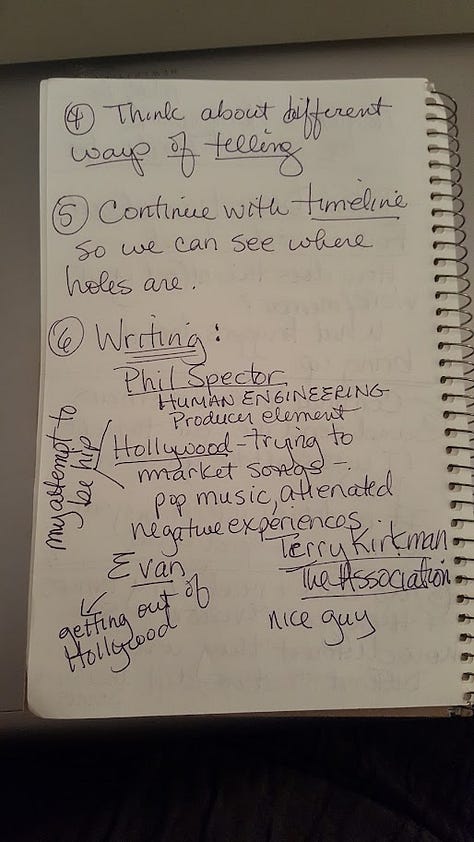
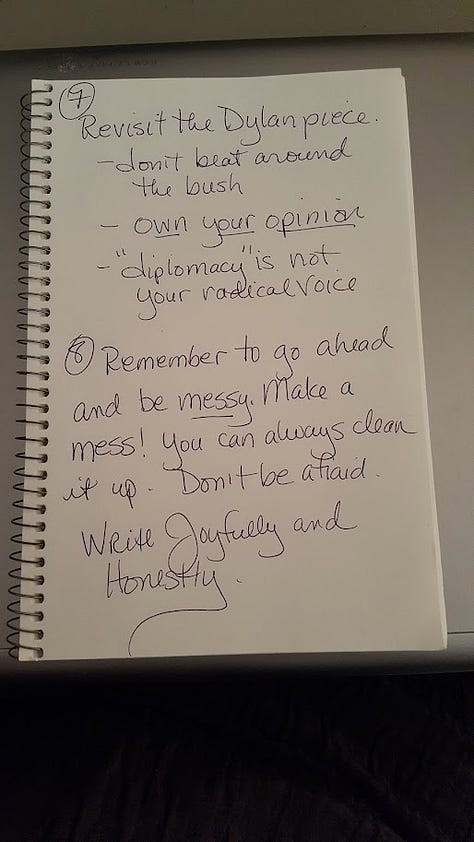

These are my foundations for writing. This is IT. This is ALL of it. Except, of course, the HOW is missing, the breaking down of how we figure out what we know, for instance, and how MUCH of it we want to include in what we’re writing (i.e. what corner to “bite off” with this particular piece we’re working on, that’s an old saw, eh?), and HOW we pay attention, or WHAT we can imagine, and on and on. What are the questions? How do we get into the habit of making connections?
Making Connections — that’s one of the most important aspects of writing well. And that’s where I want to start in this second half of the quarter. The first half was for getting to know one another, for playing around with where to start us off, seeing what you felt was useful, meaningful, and important. Remember that nothing you write is ever wasted. Hold on to what we’ve done so far; you may want to bring it into this second half of the quarter, or tuck it into your writing toolbox for another time.
So: Connections. The way I want us to start thinking about making connections is by USING A NOTEBOOK. It can be digital if that’s truly your preference, but, just as I have requested in countless high schools (heck, all schools) for over 20 years, and as I saw laptops become the order of the day, students traipsing (and sometimes trudging) into workshop with their electronic writing devices tucked under an arm, I request that you try using a physical notebook with real paper and a real writing instrument for taking notes this week… and all through April.
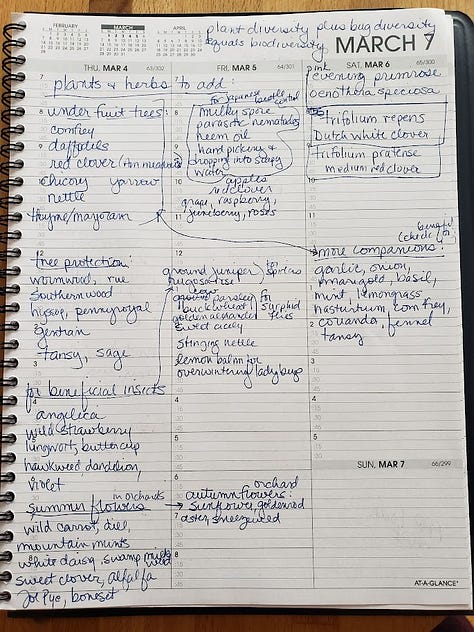
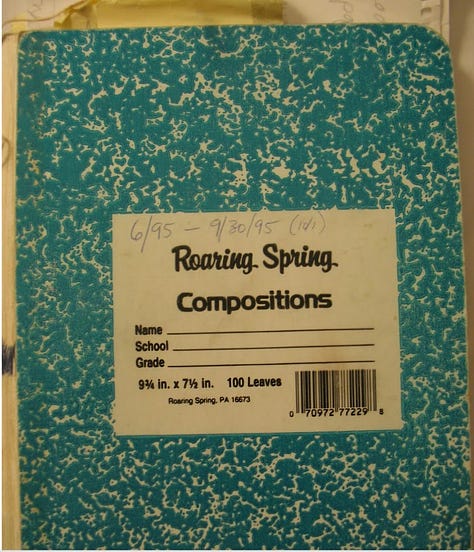

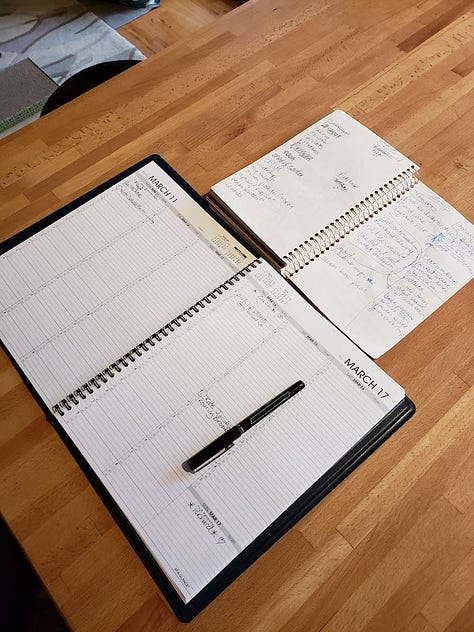

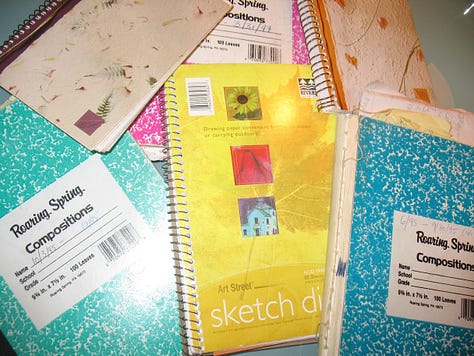
It doesn’t matter what size notebook or what kind. I have used every size and type under the sun — small, huge, three-ring, spiral (fave), composition, art tablets, etc etc etc. I keep them stacked in piles in my closet, rubber bands around many of them, the dates they were used on the front of all of them. What’s in my notebook often turns into a book, a short story, an essay, a poem… or a shopping list. :>
That’s not a boast (as if you’d think it was, but I’m always fearful of coming across that way); it’s a teachable (I hope) moment of saying there is a synergy that happens between the brain and the hand, between the mind and the words on paper, that yes, happens when you’re typing, but that happens in a different way when you’re writing by hand. It doesn’t matter if you use cursive or print. If you are sloppy or neat. Long or short. Writing longhand is what matters. There is a meditative element to it, and your retention of what you’re writing and learning is enhanced.
On Substack,
makes this case in “A Defense of Writing Longhand.” He says:“But there is obviously more to writing than typing. What I'm really doing is composing. Composition requires focus. It is, like most acts of creation, monotasking.”
That’s part of it. You’re composing when you’re writing, but we aren’t writing yet (well, we are, but it’s different, trust me). We are taking notes. I would like you to take notes this week. Lots and lots of notes.
I know many of you already use notebooks, whether for Morning Pages (I see you!), for drawing, or for keeping your daily life on track. All good. We’re going to be exploring all these uses (and how they lead to story) in April.
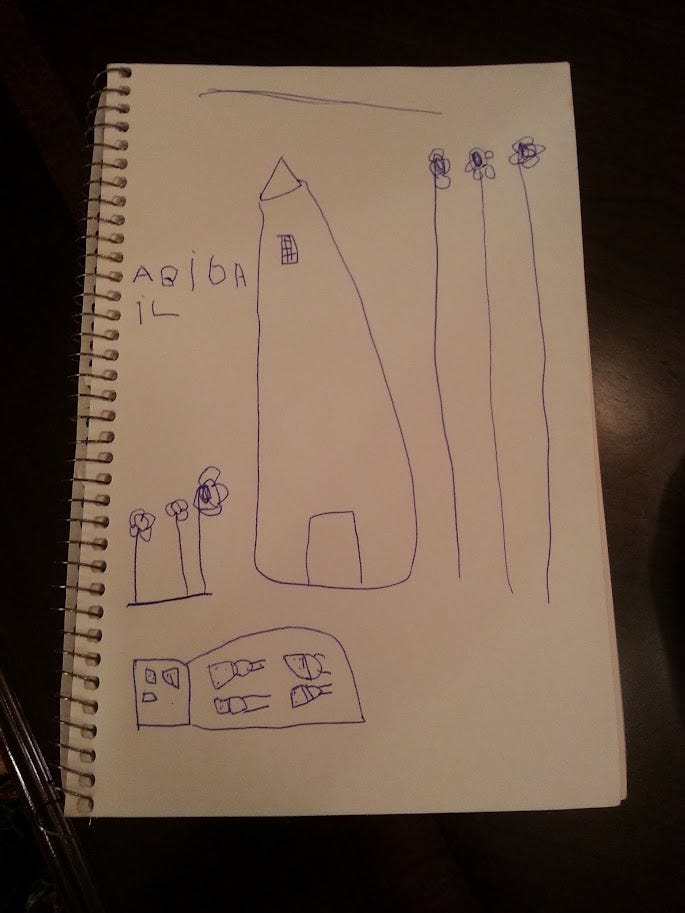
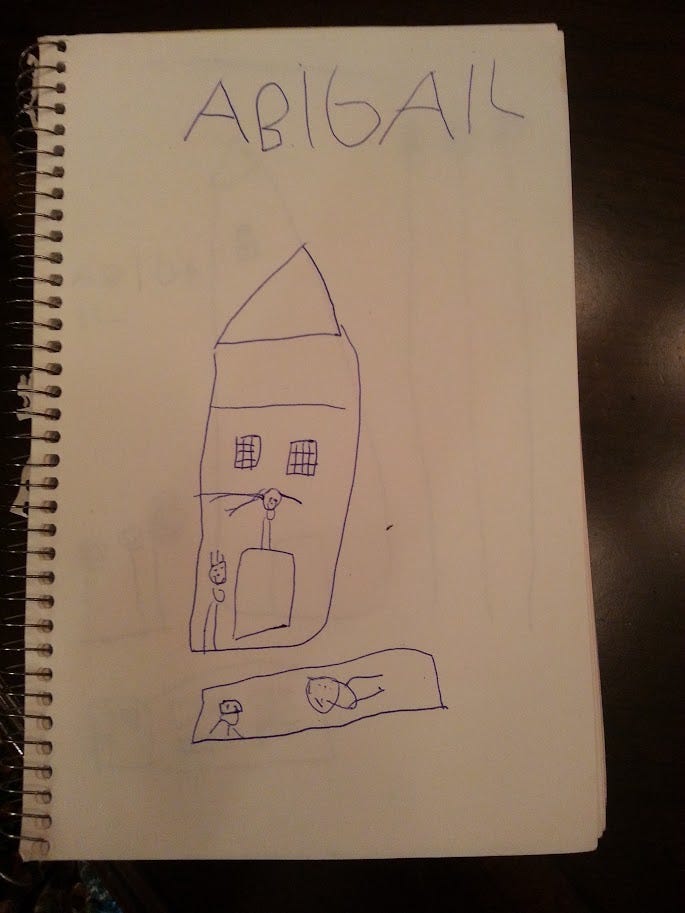
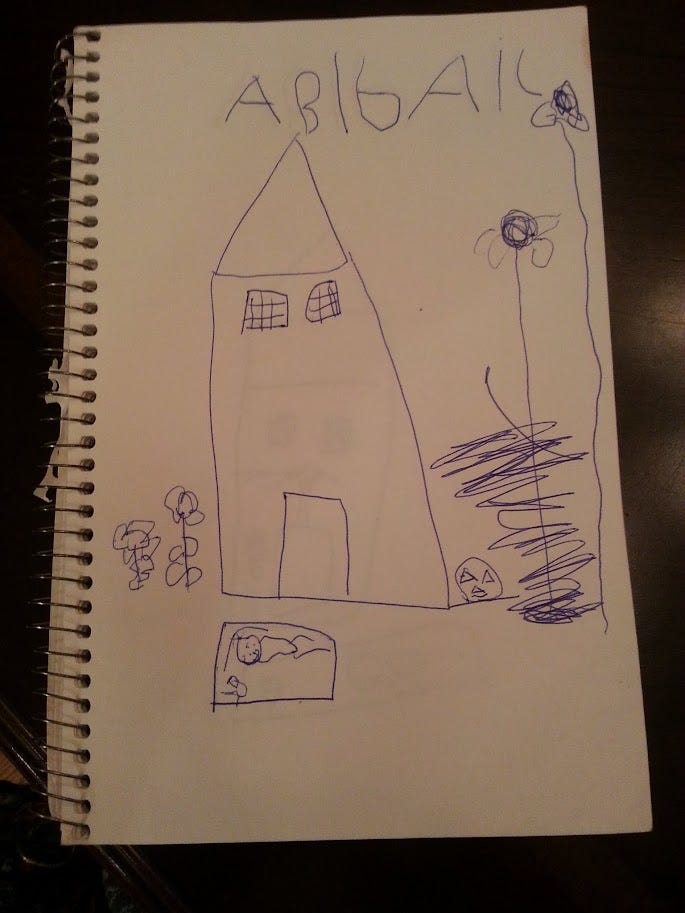
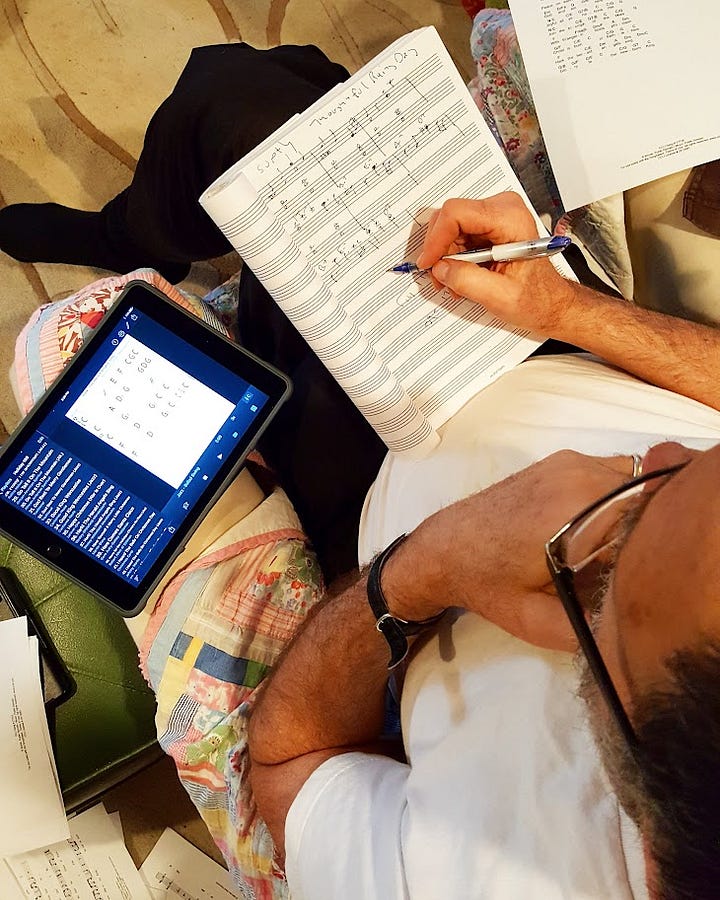
You can find a plethora of Substack authors who give you great advice on the value of writing by hand in a notebook, and even share the kinds of notebooks they use, and for what. Some of them use multiple notebooks, all at the same time! More power to ‘em! I can’t do that, I’ve tried. I can use one notebook at a time, and fill it with everything. EVERYTHING. From grocery lists to the score in games of dominoes, to grandgirl art, to story ideas and everything in between. My notebooks end up being glorious accountings of my days. Well, glorious to ME.
You likely know about
’s many paeans to “analog” notebooks. Here’s “My 4 Notebooks and What Goes Inside Them.” Then see with “For the Love of Notebooks.” has resources galore on notebooks (her Substack is even called Noted), and for those who love and work with music, like my musician husband Jim does, here is an entry on The Beatles’ collaborative notes and three ways to write a song. I love this:“Just say whatever comes into your head each time.”
Amen, brother!
I’ll leave you with this Note from
, in which Matthew Long writes about Journal Porn, lol, and it’s good!I could go on — there are so many examples, and they are all delicious. I’ll stop. We have an assignment to wrangle. It’s a good one. We will build on it from now until May, with ever-more experimentation each week. Here we go. Once again, you can upgrade your sub and join us in the assignments, here:
Or, if you aren’t subbed to Storybelly yet (almost all of it is free content) you can sub here:
And you can share this post anytime, with anyone you wish:
Okay! Next:
THE ASSIGNMENT:




